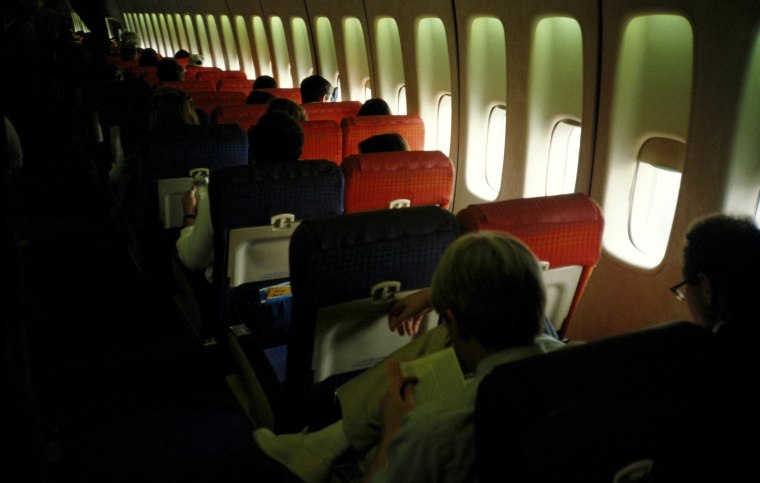Here’s a new reason to leave that seatback tray table in its upright and locked position: Disease-causing bacteria can linger for days, even up to a week, on most airplane surfaces, new research shows.
It’s no reason not to fly, of course, but a team of microbiologists and engineers at Auburn University in Alabama found that nasty bugs like MRSA and E. coli O157:H7 can hitch extended rides on armrests, window shades, tray tables, toilet handles and more.

Given the right circumstances, that contact could lead to infection with methicillin-resistant Staphylococcus aureus or the E. coli gut bug that can cause kidney failure, said Kiril Vaglenov, a post-doctoral fellow in materials science who led the study. He presented the findings Tuesday at the annual meeting of the American Society for Microbiology.
“Many travelers are concerned about the risks of catching a disease from other passengers when they spend long hours in crowded air cabins,” Vaglenov told NBC News.
Vaglenov’s study was funded in part by a program of the Federal Aviation Administration, or FAA, in partnership with Delta Air Lines. He didn’t test the germs inside an actual plane. Instead, he collected old parts from Delta and used them in his experiments that applied MRSA and E. coli bacteria suspended in various solutions, including those that mimicked human saliva and sweat.
What he found was unsettling for anyone who’s wondered how many fingers have touched the seat pocket that holds the in-flight instructions. MRSA lasted 168 hours — a week! — on the cloth seatback pocket, Vaglenov found. Other tests showed that E. coli O157 hung around for 96 hours — four days — on the material from the airplane armrest.
“I wouldn’t touch that pocket,” Vaglenov said. “I think that it should be replaced with something less porous.”
Delta officials emphasized that all surfaces in their planes are disinfected every night and before every departure, according to spokeswoman Lindsay McDuff.
But a top infection control specialist says that it’s no surprise that the Auburn team found bacteria hang around on such surfaces.
“We live in a microbial environment or, we could say, in a germy world,” said Dr. William Schaffner, a professor of preventive medicine at Vanderbilt University in Nashville, Tennessee.
He calls the new study “overly meticulous” and suggests that the real worry on a plane isn’t the germs on the armrest, but the cold and flu viruses many passengers pack with their carry-ons.
In either case, the best defense isn’t an arsenal of bleach wipes, but simple hand hygiene, Schaffner said.
“It’s another reminder to wash our hands.”